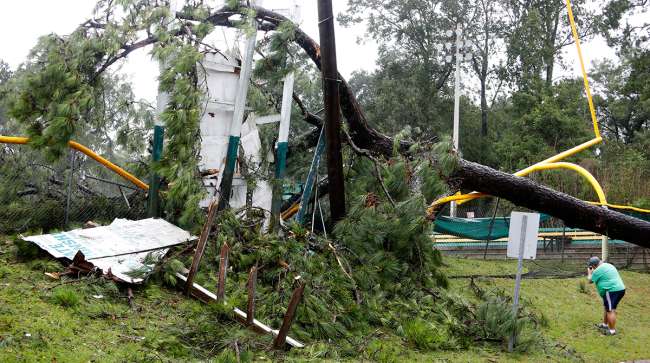Staff Reporter
Fleets, Logistics Firms Mobilize as Dorian Inches Up Coast

[Stay on top of transportation news: Get TTNews in your inbox.]
As Hurricane Dorian continued to creep up the East Coast and terminals shuttered in anticipation, logistics groups launched into action.
Dorian took aim at the coasts of North Carolina and South Carolina after buffeting the Bahamas, where it killed at least 20 people. As of Sept. 5, the National Weather Service reported the storm’s maximum sustained wind speed was 115 miles per hour.
Several states, including Tennessee, Virginia, Florida, South Carolina, North Carolina and Georgia, as well as the Federal Motor Carrier Safety Administration declared emergencies. Evacuations were ordered in Florida, Georgia, North Carolina and South Carolina. Lanes of traffic were reversed on Interstate 16 in Georgia and I-26 in South Carolina to speed up evacuations.

Todd
South Carolina Trucking Association President Rick Todd said Dorian, like all major storms, requires a careful balance of business interests and personnel needs. He said fleets, particularly those operating along the coast, are staying in touch with their customers to learn if they’re open and what their working hours are.
Todd said Dorian’s sluggish pace made it especially hard to anticipate, although he said state government agencies were well prepared with their communications.
“This has been a particularly unpredictable one. It was zigging and zagging; you really couldn’t predict [it],” Todd said. “Its speed created a lot of angst in making decisions.”
That was especially true in Florida, where Dorian’s slow pace gave trucking groups time to prepare for distribution efforts that, ultimately, proved unnecessary as Dorian went from what Florida Trucking Association president Ken Armstrong on Sept. 4 described as a potential disaster to practically a nonevent for Floridians.

Armstrong
On Aug. 30, Armstrong told Transport Topics that trucks had begun delivering fuel to service stations and goods such as food, water, plywood and generators to stores. As of Sept. 3, XPO Logistics had moved more than 175 truckloads of goods, including pallets of water, plywood and generators, to various stores within Florida.
“We’ve been working closely with our customers in affected areas to get necessities to the stores where consumers need them the most,” Troy Cooper, president of XPO Logistics, said then.
While Florida was largely spared, the Bahamas was hit hard. Walpole Inc., a Florida-based fleet, mobilized to help by donating six trailers filled with supplies, including tents, flashlights, tarps, diapers and mosquito nets, to the Bahamas. Ryan Walpole, director of purchasing and procurement at Walpole, said Sept. 4 that the company was working with the Bahamian government to determine when the goods can be loaded onto barges and shipped.
Walpole, 35, is a member of American Trucking Associations’ 2019 Lead ATA program, which is meant to foster a younger generation of trucking executives. He said the urge to help is natural for many members of the trucking community.
“We do it on a day-to-day basis without even volunteering,” Walpole said. “It’s just kind of ingrained in your blood.”
Several terminals, such as the ports of Savannah and New Brunswick in Georgia, Charleston and Georgetown in South Carolina, Wilmington and Morehead City in North Carolina, and the Norfolk International Terminals in Virginia, issued temporary closures.
Scott Cornell, transportation business lead for insurance company Travelers, said freight haulers will have to brace for an influx of goods as the ports reopen. Cornell explained that goods will have backlogged at ports because of the many ships that were not able to access the facilities during the storm. Beyond that, there likely will be a high demand for goods in the areas that were impacted by the storm.
“You have this clog in the flow, and then immediate opening of the flow and people staging to prepare for [relief efforts] immediately after,” Cornell said. “You may see an impact on the cost of moving freight in or out of that area.”

